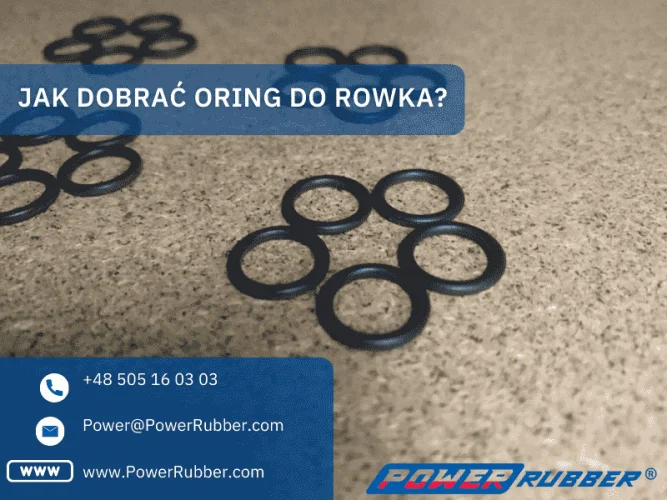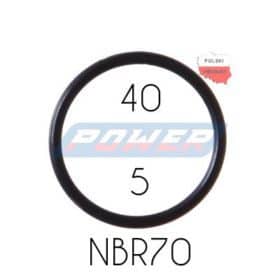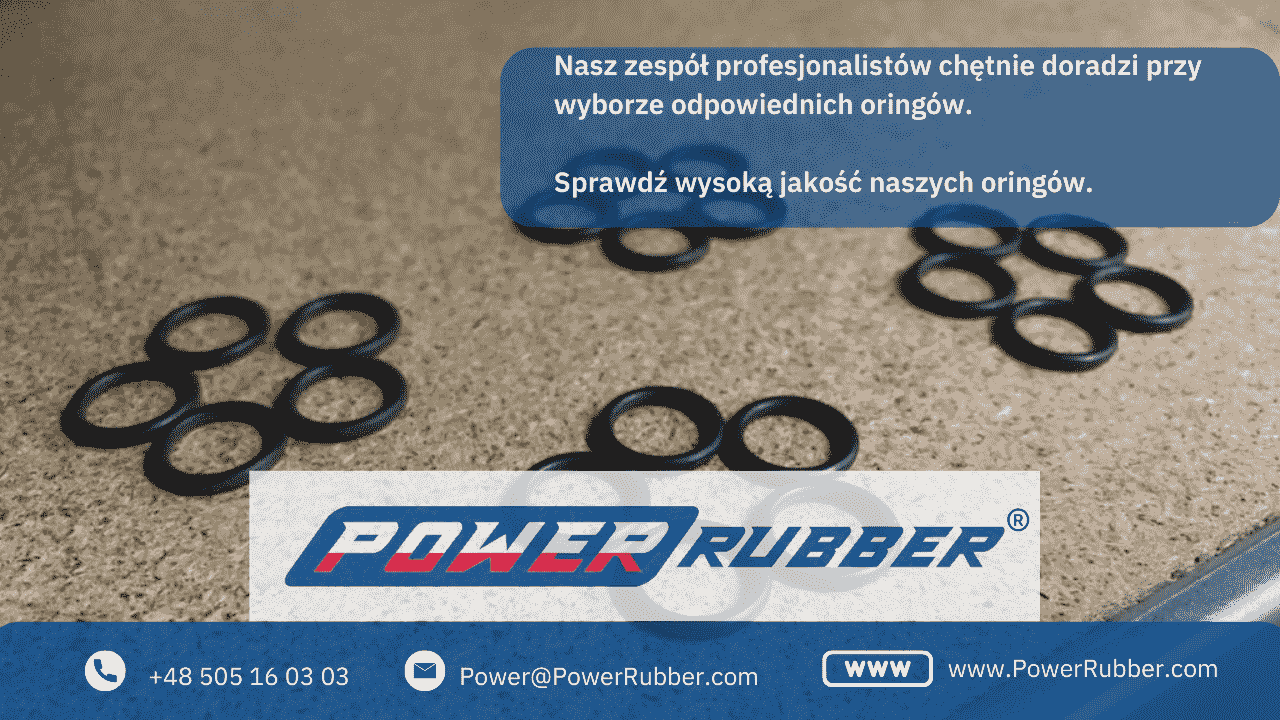How to Select an O-Ring for a Groove?
How to select an O-ring for a groove? Is this a question you need an answer to? We invite you to read our article, where we will advise you on how to properly design grooves to ensure the correct sealing of connections using O-rings. However, for professional selection of both grooves and O-rings, feel free to contact the Technical Seals Specialists at POWER Rubber via email at power@powerrubber.com or by phone at +48 505 16 03 03.
Groove for O-Ring
To make the correct selection and design of grooves, it is essential to start with the basics. Therefore, let’s begin by explaining the fundamental definitions related to the wide topic of designing grooves for O-ring seals.
Basic Definitions for O-Ring Selection
Groove – Definition
According to our engineers, a groove is defined as:
A hole or cavity, also referred to as a channel, created in a material, designed to hold another material – most commonly a dedicated technical seal – to seal the connection.
Materials for Groove Construction
Grooves are most commonly made in metals and metal alloys. With technological progress, grooves, channels, and cavities for rubber rings are now also used for items and components made from elastomers and plastics, such as plastics and even PET. Grooves are also used in construction in concrete structures and their derivatives.
O-Ring – Definition
As we know from our comprehensive guide (available here: O-ring guide), O-rings are a type of technical seal shaped as a ring with a circular cross-section. It is also important to mention that O-rings are the most common rubber seals found in our environment.
O-Ring Sizing
Here, two main dimensions need to be distinguished. So we have:
-
Inner diameter of the O-ring
The inner diameter of O-rings, often marked as "Int. Dia." or "Inner Dia." (make sure to use correct spelling in line with the Polish language dictionary). This designation refers to the distance between the internal edges of the O-rings at their maximum distance.
For example, for the O-ring 40x4, the inner diameter is 40.
-
O-Ring Thickness – Section
The second important element in marking O-rings is the thickness. It shows the maximum diameter in the seal surface with the "O" section (present in the ring’s cross-section). For example, the O-ring 130x5 has an inner diameter of 130 mm and a thickness of 5 mm. You can check the technical drawing of O-rings to see this thickness: O-ring 130x5 NBR made from NBR. As can be seen, the thickness is 5 mm.
Types of Grooves
After reviewing the basic definitions related to O-ring grooves, let’s move on to another important issue: the types of grooves.
-
Rectangular grooves
-
Square grooves
-
Triangular grooves
-
Trapezoidal grooves
Rectangular Grooves
Rectangular grooves are the standard type of channel used for rubber O-rings. These edges intended for seals are the most cost-effective solution. The knowledge available from specialists is the broadest for this type.
Square Grooves
Square grooves are a type of rectangular groove. As commonly known in basic geometry: square figures are also rectangles. This type of groove is most commonly used in amateur productions where there is no knowledge of groove design for O-rings.
Triangular Grooves
Triangular grooves are mostly used for covers. These connections result in the O-rings making contact with three surfaces. Triangular grooves are typically right-angled triangles with angles of 45°-45°-90°. The groove section is an equilateral triangle. Depending on needs, the section can be modified by redesigning with the help of specialists.
Trapezoidal Grooves
Trapezoidal grooves are used primarily for contact with gases. Well-designed trapezoidal grooves ensure the sealing of channels by almost completely filling the space with the elastomer used. The pressure present causes the space to be filled at the base of the trapezoid.
Methods of Designing Sealing Channels
When discussing grooves, it's worth mentioning the available methods for designing grooves. Due to the developing technology, two main terms are used:
-
Milling
Milling is a type of cutting most commonly used to create grooves for O-rings. A disc milling machine is typically used for this purpose. -
Groove cutting
The cutting process used for designing grooves is called milling, a type of cutting.
O-Ring Groove Table
When selecting rubber O-rings, dedicated tools are available to help. One such tool, created by specialists in rubber products, is a table with groove dimensions for matching O-rings. Let’s take a look at how the groove tables for O-rings appear.
Groove Dimensions – Table
It is important to note that groove tables are divided into two types based on application. Thus, we distinguish between:
-
Dynamic O-Ring Applications
Depending on the application, the values in the tables are specific to dynamic applications. -
Static Seals
O-ring tables also help in selecting O-rings for static seals, where there is no movement of the technical seal.
O-Ring Groove Table
We invite you to contact us for professional groove dimension selection. You can buy O-rings – a wide selection here.
Back-Up Rings
In designing grooves and selecting seals, back-up rings are also considered. Most often made from PTFE material, back-up rings limit the movement of rubber O-rings. They change the size of the grooves, which in turn significantly affects the pressure and type of expansion of the O-rings.



